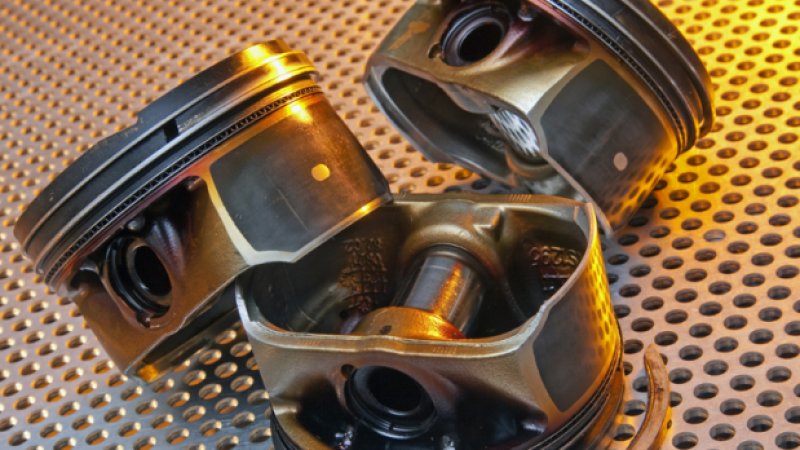Asian and American automakers have sent an official request to the American Petroleum Institute, urging that it create as soon as possible a supplement to the existing ILSAC GF-5 standard for gasoline-fueled engine oils. The automakers say a GF-5 Plus supplement would immediately beef up the existing specification by measuring how well oils protect engines from low-speed pre-ignition.
The supplement should be able to begin licensing by Jan. 1, 2018, according to the July 20 letter sent by Ron Romano of Ford Motor Co., who chairs the lubricants working group of the International Lubricants Specification Advisory Committee. ILSACs member companies include Toyota, Honda, Mitsubishi, Nissan, Mazda, Daihatsu, Subaru and Suzuki, in Asia, and Ford, Fiat Chrysler and General Motors in North America.
The vehicle manufacturers requested that the supplement include all the performance requirements presently in ILSAC GF-5 plus the new Ford Low Speed Pre-ignition engine test with a maximum average number of five measured events. In addition, they believe the supplement should include fuel economy limits for SAE 0W-16 oils.
In response, the API Lubricants Group will hold a Standards Meeting on Aug. 15 at its offices in Washington, D.C., to discuss the request and determine timing and how to meet the requested oil performance parameters. API indicated that additional information on the proposed meeting will be provided in the near future.
In the letter, Romano noted that low speed pre-ignition is of concern to all ILSAC member companies and there is an immediate need for preventive action to reduce/eliminate the occurrence of oil-derived low-speed engine pre-ignition. This is needed to protect the numerous turbocharged direct injection engine powered vehicles on the road today that are experiencing and being damaged by LSPI.
Due to delays in the development of ILSAC GF-6, the ILSAC members feel it is necessary to incorporate LSPI protection into a category/standard as soon as possible, the letter emphasized.
GF-6, the next engine oil upgrade, has faced repeated delays in development, and now appears unlikely to reach market before the second half of 2019. Rather than wait for its completion, the auto industry wants API to act now on its most critical needs.
The original GF-6 wish list included development of engine oil formulations to ensure against the occurrence of low-speed engine pre-ignition caused by engine oil. To improve overall vehicle fuel efficiency, automobile manufacturers are building increased numbers of smaller displacement, turbocharged engines, but these appear to be susceptible to LSPI.
LSPI occurs in gasoline vehicle engines when there is a premature ignition of the main fuel charge, and is most common in certain turbocharged direct-injection vehicles operating in low-speed and high-load driving conditions. Fuel igniting prior to the optimum timing in the engine can result in crippling and permanent damage.
LSPI occurs near peak torque of the brake mean effective pressure (BMEP) map, and is usually triggered at 1,500 to 2,500 rpm and greater than 17 bar BMEP. Engines dont operate in this regime on most certification cycles, but they do encounter it in real-world driving. So LSPI is being introduced as a new performance parameter in GF-6, using a Ford-designed engine test that counts pre-ignitions.
Fords LSPI procedure measures the number of pre-ignition events which occur over a test cycle. It is a flush and run test, meaning the test engine is used for multiple tests and the previous test oil is flushed from the test engine using the next test oil.
Photo: Southwest Research Institute (SwRI)

The test is run in four iterations, each 175,000 engine cycles in length. The test engine runs at a low-speed and high-load, steady-state condition to generate pre-ignition events, which are counted throughout the 175,000 cycles. Combustion cylinder pressure is measured directly from each cylinder to determine the occurrence of a pre-ignition event.
ILSAC is requesting that LSPI be inserted now into GF-5, and that API begin licensing this supplemental category/standard by Jan. 1, 2018. The group believes this timing is achievable since the low speed pre-ignition test has already been developed and approved for publication as an ASTM procedure. Candidate testing can start immediately, Romanos letter pointed out.
ILSAC also provided a marked-up GF-5 document with their vision of a standard which they refer to as GF-5 Plus.
In addition to including LSPI testing, they are proposing that the Sequence IIIH engine test for wear and oil thickening be accepted as an alternative to the current Sequence IIIG test (with some modification to limits on average weighted piston deposits, as shown below).
|
Wear and Oil Thickening: ASTM |
IIIG |
IIIH |
|
Kinematic Vis Increase @ 40C, % Max. |
150 |
150 |
|
Avg. Weighted. Piston Deposits, merits, Min |
4.0 |
3.7 |
|
Hot Stuck Rings |
None |
None |
|
Average Cam plus Lifter Wear, μm, Max. |
60 |
60 |
ILSAC said the GF-5 Plus supplement should also address the fuel economy contribution of SAE 0W-16 oils, which GF-5 lacks. The proposed limits for the Sequence VID fuel economy test are as follows.
|
Sequence VID |
SAE 0W-16 |
|
FEI SUM |
2.8% Minimum |
|
FEI 2 |
1.3% Minimum after 100 hours aging |
However, since the Sequence VID test has run out of parts and is no longer available, the limits for SAE 0W-16 oils may need to be established in the replacement Sequence VIF test, when that test becomes available. Currently, there is a Sequence VID/VIE Equivalency Matrix Study under way in ASTMs Passenger Car Engine Oil Classification Panel. This work may have to be expanded to include the Sequence VIF test procedure, which is specifically designed to evaluate very low-viscosity engine oils.